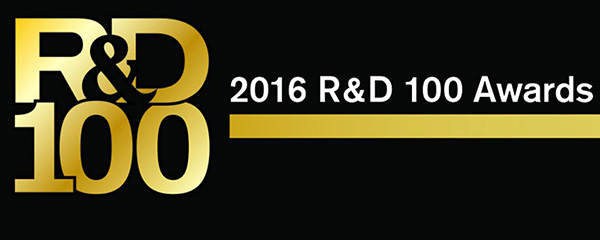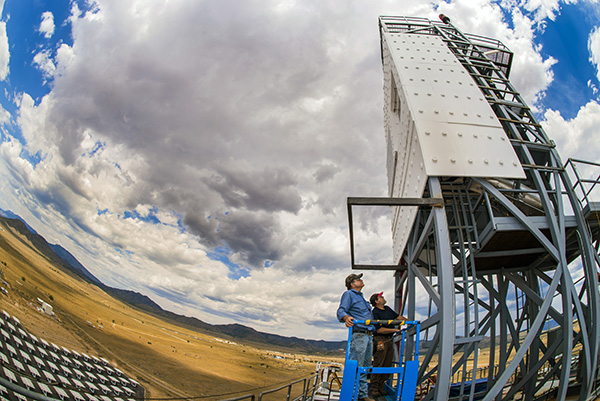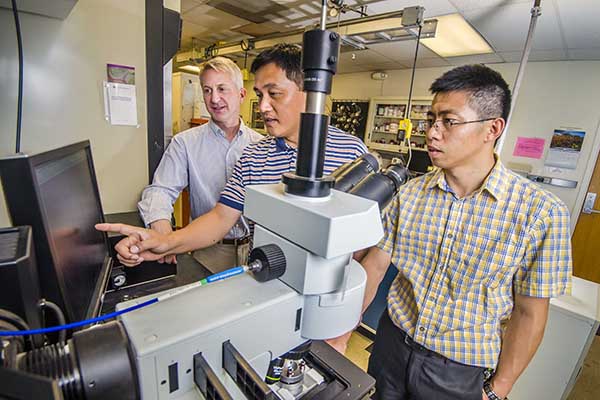. . . and two ‘special recognitions’ in ‘Oscars of Invention’

Competing in an international pool of universities, corporations, and government labs, Sandia inventions and co-inventions captured six R&D 100 Awards this year. In addition, two Sandia teams received special recognition awards.
R&D Magazine presents the awards each year to researchers who its editors and independent judging panels determine have developed the year’s 100 most outstanding advances in applied technologies.
Says Div. 1000 VP and Chief Technology Officer Rob Leland, “The awards, with their focus on practical impact rather than pure research, reward entrants on their products’ design, development, testing, and production. These awards recognize the teams’ ingenuity and innovativeness and demonstrate our ability to achieve bold results in our work. Many of our winning teams include members from different Sandia organizations, or from outside Sandia, demonstrating our collaborative spirit.
“Four of the winning Sandia technologies had their roots in the LDRD program. In fact, over the past five years, about 80 percent of Sandia’s R&D 100 Award winning technologies have involved some investment by LDRD.”

John Kelton and Daniel Ray perform inspection of the Falling Particle Receiver during a cloud delay atop the National Solar Thermal Test Facility.
Sandia winners are:
The Falling Particle Receiver for Concentrated Solar Energy is designed to lower the cost and improve the efficiencies of solar energy systems. It works by dropping sand-like ceramic particles through a beam of concentrated sunlight, capturing and storing the heated particles in an insulated tank. The technology can capture and store heat at high temperatures without breaking down, unlike conventional molten salt systems. Principal Investigator: Cliff Ho; see video at https://youtu.be/uEy6O9P5Z6c
Virtual Environment for Reactor Applications (VERA). VERA is suite of physics simulation tools that visualizes the internal processes of commercial nuclear fission power plants and predicts reactor behavior in a number of potential scenarios. Sandia was a member of a consortium of researchers that included Oak Ridge National Laboratory, the Electric Power Research Institute, Westinghouse Nuclear, and Idaho and Los Alamos national laboratories. The Sandia PI was Randall Summers.
See Falling Particle Receiver here: https://www.youtube.com/watch?v=uEy6O9P5Z6c

Hongyou Fan, center, points out a nanoscience result to colleagues Paul Clem, left, and Binsong Li.
Stress-induced Fabrication of Functionally Designed Nanomaterials enables the production of new materials with better performance and structure control while reducing costs, improving manufacturability, and minimizing environmental and safety concerns. The technology represents a new paradigm for the production of functionally designed nanomaterials with more degrees of freedom than chemical methods. PI: Hongyou Fan; see https://youtu.be/kFNTpo1bAHQ
T-QUAKE (Transceiver for Quantum Keys and Encryption) miniaturizes all of the components necessary to securely encode, transmit, receive, and decode quantum photonic signals onto a single microchip, in effect creating an ultra-secure cryptographic network node for any secure communication or network application. PI: Ryan Camacho; see https://youtu.be/hk2XU_k1ZDI
Pyomo v4.1 is an extensible software platform for developing optimization-based analytics to support complex decision-making in real-world applications. Optimization —

finding a solution that minimizes (or maximizes) a function over a set of possible alternatives — is widely used in business, science, and engineering to minimize costs, identify worst-case scenarios, and analyze trade-offs. Optimization is used to schedule commercial aircraft and crews, manage supply chains for auto manufacturers, design sensor networks to protect water distribution systems, identify locations for military supply depots, and operate power grids worldwide. PI: Bill Hart; see https://youtu.be/x4Mf9WtQ-Ak
The Ultra-Fast X-Ray Imager (UXI) is the fastest multiframe digital X-ray camera in the world. It takes images with an exposure time of only 1.5 nanoseconds — 25 times faster than the best digital cameras. It helps researchers capture plasma images more rapidly, and has already been used successfully in hundreds of experiments at Sandia’s Z-Beamlet laser facility and at Lawrence Livermore National Laboratory’s National Ignition Facility. The device was also awarded a “Market Disruptor Product Special Recognition Award.” PI: John Porter; see https://youtu.be/8WzkY-CRxJ0
Sandia also received a “Green Tech Special Recognition Award” for a High Power Battery Tester that significantly improves battery-life predictions and helps meet the growing demand for better, longer-life electrified vehicle and grid storage batteries. Co-developed with Arbin Instruments, Ford Motor Co., Montana Tech. Summer Ferreira served as Sandia PI; see https://youtu.be/lIIdVZAej0s